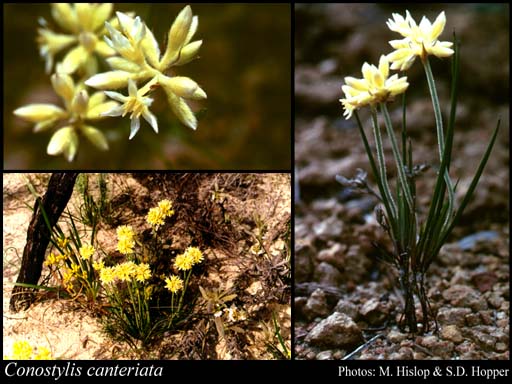- Reference
- Fl.Austral. 45:459 (1987)
- Conservation Code
- Not threatened
- Naturalised Status
- Native to Western Australia
- Name Status
- Current
Rhizomatous, tufted, stilt-rooted perennial, grass-like or herb, 0.1-0.2 m high. Fl. yellow, May to Aug. White, grey or yellow sand.

Scientific Description
Leaves flat, 50-220 mm long, 1.5-2 mm wide; bristles or hairs on the leaf margin present, 0.5-0.8 mm long, with at least some small side branches at the base, flexuose and soft, angled towards the leaf apex; hairs on the surface of the leaf present. Scape present, hairy, 70-265 mm long. Inflorescence subtended by a bract 15-20 mm long, with several flowers; floral bracts 4-9 mm long; pedicels present, 1-3 mm long; flowers 8-10 mm long. Perianth hairy, radially symmetrical, uniformly coloured or suffused with a darker colour over the base colour, yellow, with six more or less equal tepals, the inner segments 6-7.5 mm long. Stamens six, in one level; filaments 1-1.2 mm long; anther 2.8-3 mm long, without an appendage. Style 6-7 mm long. Flowers in May, June, July or August. Occurs in the Geraldton Sandplains, Swan Coastal Plain and Avon Wheatbelt IBRA bioregion(s), of the South-west Botanical Province.
Distribution
- IBRA Regions
- Avon Wheatbelt, Geraldton Sandplains, Swan Coastal Plain.
- IBRA Subregions
- Geraldton Hills, Lesueur Sandplain, Merredin, Perth.
- Local Government Areas (LGAs)
- Carnamah, Coorow, Dandaragan, Greater Geraldton, Irwin, Mingenew, Three Springs.